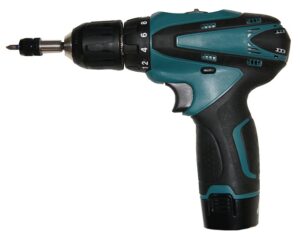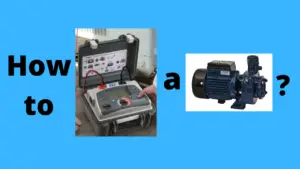Delta motors are common in industrial and commercial settings, and they are usually wired in a specific way to ensure safe and efficient operation. However, if a delta motor is wired incorrectly, serious consequences can result. In this article, we’ll explore what can happen if you wire a delta motor incorrectly, and we’ll provide tips for avoiding these risks.
Table of Contents
Understanding Delta Motors:
Delta motors work by using three separate coils, which are connected in a delta formation.
When the motor is powered on, electricity flows through each coil, creating a magnetic field that drives the motor’s rotation.
If the coils are not wired correctly, the magnetic fields can interact in ways that can cause damage to the motor or surrounding equipment.
Wiring a Delta Motor Incorrectly:
Common mistakes when wiring a delta motor include misidentifying the coils, reversing the coil connections, or connecting the motor to the wrong voltage source.
If any of these errors occur, the motor may fail to operate correctly, produce excessive heat or vibration, or even catch fire.
Additionally, miswiring a delta motor can cause damage to other components in the electrical system, including fuses, circuit breakers, and transformers.
Also, if a motor is wired incorrectly or if there are faults in the wiring, it can cause a number of problems that can lead to motor failure, excessive heat or vibration, or even fire. Here are some reasons why this might occur:
- Overheating: Incorrect wiring can cause the motor to draw more current than it was designed for. This can cause the motor to overheat, which can damage the insulation on the windings or even cause the windings to melt. Overheating can also cause bearings to fail, which can lead to excessive vibration and premature failure.
- Vibration: If the wiring is incorrect, the motor may not run smoothly. This can cause excessive vibration, which can damage bearings, cause the rotor to rub against the stator, or even cause the motor to come apart.
- Short circuits: Faulty wiring can cause short circuits, which can damage the windings and cause the motor to fail. A short circuit can also cause a fire if there is enough heat generated.
- Electrical noise: Incorrect wiring can cause electrical noise, which can interfere with other electrical equipment and cause malfunctions.
- Reduced efficiency: Incorrect wiring can cause the motor to operate at reduced efficiency, which can lead to higher operating costs and reduced lifespan.
In summary, wiring errors can cause a range of problems that can ultimately lead to motor failure, excessive heat or vibration, or even fire.
It is important to ensure that motors are wired correctly and that any faults are addressed promptly to avoid these issues.
Safety Precautions:
Working with delta motors can be dangerous, especially if the motor is miswired. To avoid injury or damage, it is essential to follow safety procedures when working with electrical systems.
This includes wearing protective gear, using insulated tools, and turning off the power before working on the motor.
Additionally, it is important to ensure that the motor is properly grounded and that all connections are tight and secure.
dual voltage motors
Motors that are designed for both wye and delta connections are typically referred to as dual-voltage motors. These motors have six leads that can be configured in either a wye or delta connection.
While these motors offer some flexibility in their wiring options, there are still potential connection errors that can occur. Here are a few examples:
- Incorrect voltage: Dual voltage motors are designed to operate at different voltage levels depending on the wiring configuration. If the wrong voltage is applied, it can cause damage to the motor or other components in the system.
- Wrong connection sequence: If the leads are not connected in the correct sequence, the motor may not operate at the correct speed or direction. This can also cause excessive vibration or overheating.
- Short circuits: Faulty wiring or damaged insulation can cause short circuits, which can damage the motor or other components in the system.
To avoid these connection errors, it is important to carefully follow the wiring diagram provided by the manufacturer and to test the motor and electrical system thoroughly before putting it into service.
How to tell if a motor is a wye or delta
Determining whether a motor is a wye or delta can be a bit tricky, but there are a few methods that can be used to make the determination. Here are some steps to follow:
- Check the nameplate: The nameplate on the motor should provide information about the motor’s configuration. Look for the letter “Y” or “D” to indicate whether the motor is wye or delta connected. If the nameplate does not provide this information, move on to the next step.
- Count the leads: A three-phase motor will have three power leads, plus possibly a ground wire. If there are six or nine leads coming out of the motor, it is likely wye connected. If there are only three or four leads, it is likely delta connected. This method is not foolproof, however, as some motors may have additional leads for auxiliary functions.
- Check the wiring diagram: If the motor has a wiring diagram printed on it, it should show how the motor is connected. Look for symbols indicating whether the motor is wye or delta connected. If the diagram is not clear or is missing, consult the manufacturer’s documentation for the motor.
- Measure the resistance: If none of the above methods are conclusive, you can measure the resistance between the motor leads to determine whether it is wye or delta connected. With the power disconnected, use a multimeter to measure the resistance between each pair of leads. For a wye-connected motor, the resistance between any two phase leads should be equal and should measure approximately 1.73 times the resistance between a phase lead and the neutral lead. For a delta-connected motor, the resistance between any two phase leads should be equal and should measure approximately the same value.
It is important to note that misidentifying a motor’s configuration can lead to incorrect wiring, which can cause damage to the motor or other components of the electrical system.
If you are unsure about how to identify a motor’s configuration, it is best to consult an expert in motor repair or electrical systems.
what happens if I connect the delta motor to Y voltage
If you connect a delta motor to a wye (Y) voltage supply, it can cause a number of problems, including:
- Overheating: Delta motors are designed to operate at a specific voltage and current level in a delta configuration. If you connect the motor to a wye voltage supply, it can cause the motor to draw more current than it was designed for. This can cause the motor to overheat, which can damage the insulation on the windings or even cause the windings to melt.
- Reduced torque: The voltage in a wye configuration is lower than in a delta configuration. As a result, the motor may not be able to produce the same amount of torque as it would in a delta configuration. This can cause the motor to struggle to start or to operate at a reduced efficiency.
- Vibration: If the motor is unable to produce the required torque, it can cause excessive vibration, which can damage bearings, cause the rotor to rub against the stator, or even cause the motor to come apart.
- Reduced lifespan: The combination of these factors can lead to premature failure of the motor or other components in the system. This can result in increased downtime and repair costs.
connecting a delta motor to a wye voltage supply can cause a range of issues that can lead to motor failure and burnout, reduced efficiency, and increased costs.
It is important to ensure that the motor is wired correctly according to its configuration and that any faults or errors are addressed promptly to prevent damage to the motor or other components of the electrical system.
Troubleshooting a Miswired Delta Motor:
If a delta motor is miswired, it may be possible to troubleshoot and fix the problem. This can involve checking the connections between the motor and the power source, as well as testing the coils for continuity and resistance.
If the issue cannot be resolved, it may be necessary to consult an expert in motor repair or electrical systems.
Conclusion:
Wiring a delta motor incorrectly can have serious consequences, including damage to the motor, surrounding equipment, or even personal injury.
To avoid these risks, it is important to understand how delta motors work and to follow proper wiring procedures.
If you suspect that a delta motor is miswired, take steps to troubleshoot the issue or consult an expert for assistance.
By taking these precautions, you can ensure the safe and efficient operation of your motor and electrical system.
Don’t Leave Empty-Handed!
Install my Free Android App on Google Play:
Electrical Cables Most Common Tables “Cables Tables”
And, my Electrical Calculations App “Fast Electrical Calculator”
Discover more great content by subscribing to My channel
Looking to stay ahead of the game in the world of electrical engineering? Subscribe to my YouTube channel and gain access to exclusive content you won’t find anywhere else!
The staff I recommend
(Amazon Affiliate Links to products I believe are high quality):
- Economy 120 Volt/60Hz AC Power Source – Step-Down Voltage & Frequency Converters 1800W
- UNI-T Digital Multimeter Tester UT139C
- 50-Amp Extension Cord for RV “100ft”
- Voltage Stabilizer 110/220v
- Hair Dryer “best selling“
- TOSHIBA EM131A5C-BS Countertop Microwave Ovens
Disclaimer: This contains affiliate links to Amazon products. I may earn a commission for purchases made through these links.



